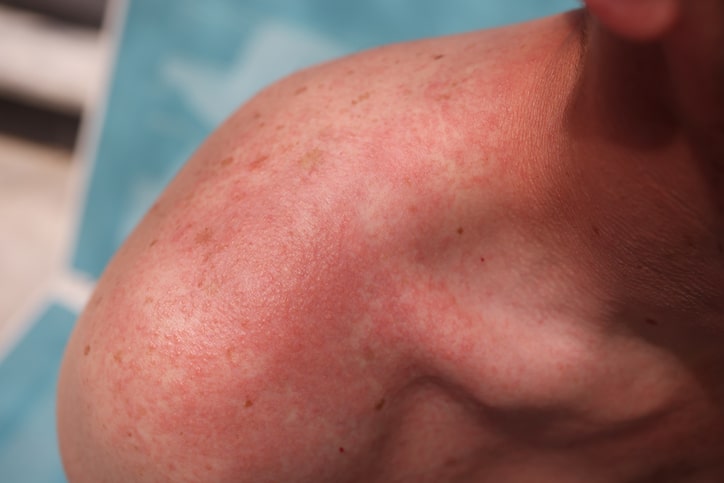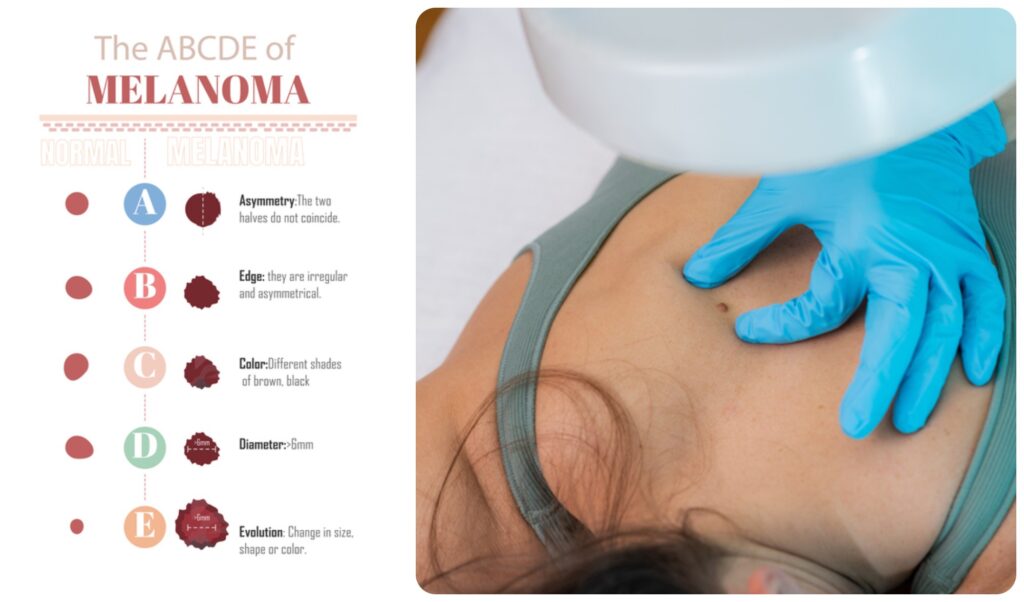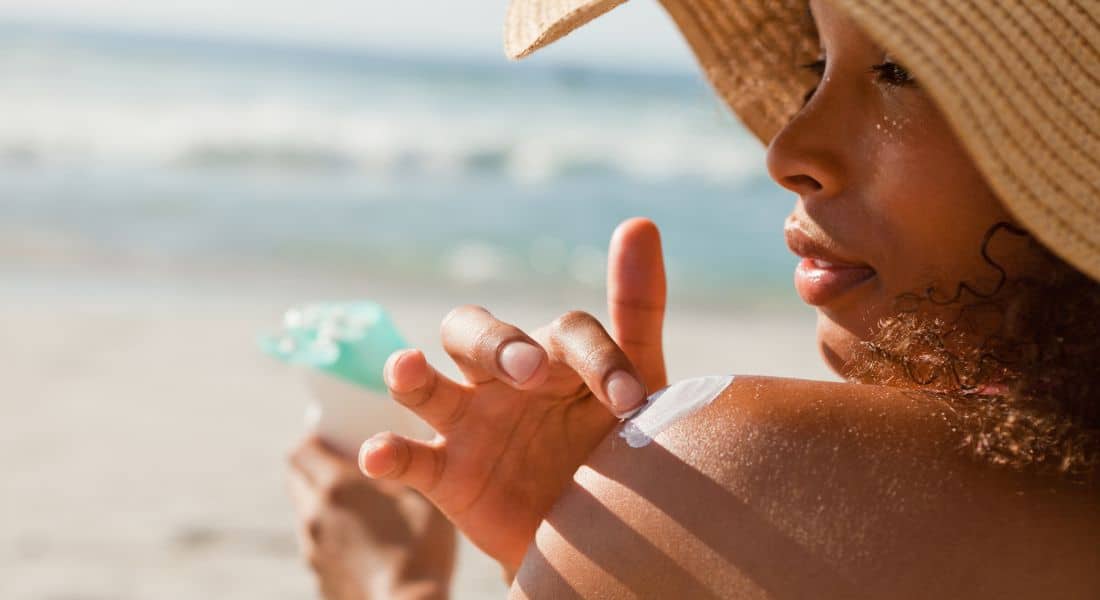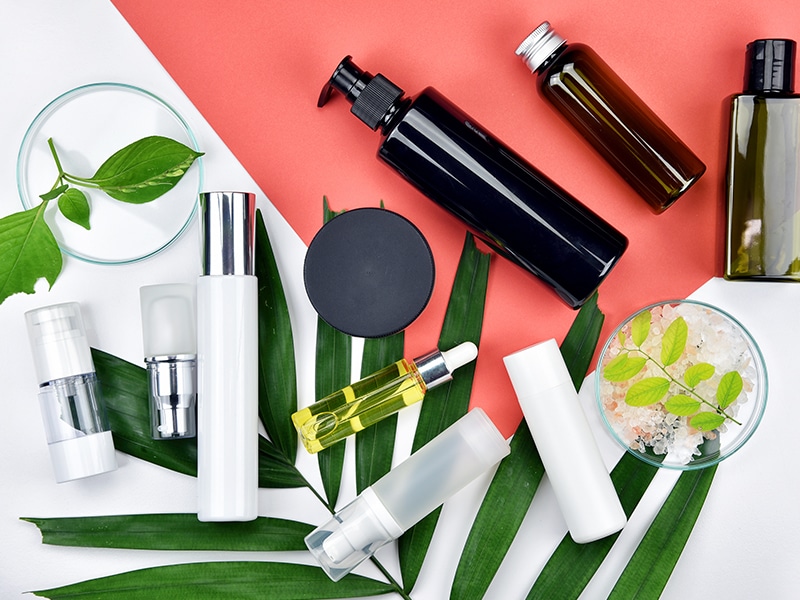Everything under the sun needs protection from harsh Texas summers, and that’s especially true of our skin, which serves as an indispensable barrier between us and our environment.
The largest organ in the human body takes a beating year-round, whether from allergens or dry air irritating it, heat and humidity causing breakouts, or intense ultraviolet (UV) light triggering a range of problems, from sunspots to skin cancer.
“The UV radiation from the sun damages DNA in the skin and leads to skin cancers, wrinkles, discoloration, sunspots, and broken blood vessels,” says Angie S. Koriakos, DO, dermatologist on the medical staff at Methodist Richardson Medical Center.
Topping the list are sunburns — a painful rite of summer that we’ve all dealt with — but are we treating our sunbaked skin right? And what do we risk by constantly exposing our skin to damaging UV rays?
Dr. Koriakos shares some advice on finding relief during the dog days of summer and avoiding worse problems down the road.

Avoid peeling sunburned skin or popping blisters. Keep skin hydrated so it can heal.
TYPES OF SUNBURNS
About one in three American adults and more than 50% of children suffer a sunburn each year, making it the most common form of sun damage.
Sunburns cause an inflammatory reaction in the skin, making it pink or red and warm to the touch. They come in two degrees, based on how deep the damage goes:
- First-degree: If only the upper layer, or epidermis, of the skin is damaged, the burn should heal on its own after a few days. Until then, stay out of the sun, if possible, because sunburnt skin is more susceptible to further damage.
- Second-degree: Blisters are the tell-tale sign of a second-degree sunburn. This damage delves deeper into the dermis layer and can damage nerve endings, leaving the skin swollen and bright red. A second-degree sunburn can take weeks to heal and may require medical attention.
To avoid the discomfort, blistering, and skin peeling of a sunburn, experts like Dr. Koriakos recommend using sunscreen with a sun protection factor (SPF) of 30 or higher and reapplying it every two hours. Once the damage is done, drinking plenty of water and keeping your skin hydrated will help the burn heal.
“It is important to stay hydrated and manage the symptoms with aloe gel and ibuprofen or acetaminophen for pain relief,” Dr. Koriakos says.

Picking the right sunscreen can make all the difference between sun-kissed skin and a sunburn.
THE RIGHT SUNSCREEN
The best protection from the sun, aside from protective clothing and a wide-brimmed hat, is quality sunscreen with a high SPF — or better yet, sunblock.
Dr. Koriakos prefers lotion containing blockers like zinc oxide and titanium dioxide because they can be applied immediately before sun exposure. Sunblock with iron oxide is superior because it provides additional protection against visible light.
Also, consider that SPF relates to the amount of sun exposure, not the time spent in the sun. So, someone who burns after an hour without sunscreen is not protected for 15 hours wearing SPF 15. Far from it, because the time of day, type of skin, the amount of sunscreen applied, and how often you apply it all figure into the equation.
Most chemical sunscreens, on the other hand, need to be applied 30 minutes before going outside, Dr. Koriakos says. Watch out for sunscreens that contain ingredients that may cause cancer, most notably benzene.
“Years ago, benzene was found to be in several sunscreens, particularly the spray versions of sunscreens,” she says. “I recommend avoiding sunscreens that contain benzene.”

Breaking out in a painful rash after exposure to the sun could mean you have an allergy.
SUN ALLERGY OR PMLE
Polymorphous light eruption (PMLE), also known as sun allergy, is a common skin rash caused by sun exposure that develops in patients who are sensitive to UV light.
Symptoms of the rash include clusters of small bumps and blisters, inflamed rough patches, and itching or burning after sun exposure.
Dr. Koriakos advises patients with PMLE to avoid sun exposure. If you do have to be out in the sun, apply sunscreen with an SPF of 30 or higher every two hours and wear sun-protective clothing for prevention.
“In some cases, a prophylactic steroid injection may also be considered to prevent the eruption,” she says.

Your ABCDEs can help you remember telltale signs of skin cancer.
SKIN CANCER
While the symptoms of sun damage are usually treated as mild irritations, the complications can include cancers. Skin cancers can be divided into three main types, each named for where the cancer originates:
- Squamous cell carcinoma, which begins in the outer layer of skin or squamous cells. These tumors begin on sun-exposed areas and can spread deeper into the skin and to other parts of the body.
- Basal cell carcinoma, which begins in the basal cells of the epidermis. The most common form of skin cancer, basal cell carcinoma accounts for 80% of cases. These tend to start on the face, head, neck, or arms. They grow more slowly but can spread if left untreated.
- Melanoma, which begins in the cells that produce melanin, the melanocytes. This is the least common form of skin cancer but the most dangerous because it’s always malignant and much more likely to spread to other parts of the body.
Identifying skin cancer early is critical to successfully treating it. If you’re worried about a spot on your skin that is changing size, shape, or color, talk to your primary care provider or make an appointment with a dermatologist.
“Concerning developments that require a prompt evaluation by a dermatologist include bleeding, moles or freckles that change shape or color, or an enlarging lesion,” Dr. Koriakos says.

No one is immune from the damaging effects of the sun, no matter how light or dark their skin tone.
EVERYONE’S AT RISK
Finally, there’s a common misconception that people with darker skin are immune to the sun’s effects because of the protective effects of melanin.
Melanin does help block out UV rays to a point, which is why people with fair skin (and a low amount of melanin) burn quicker than people with darker skin.
But Dr. Koriakos warns that we’re all at risk without the added protection that sunscreen, sunblock, and protective clothing can provide.
“Anyone can develop skin cancer regardless of skin tone,” she says.






